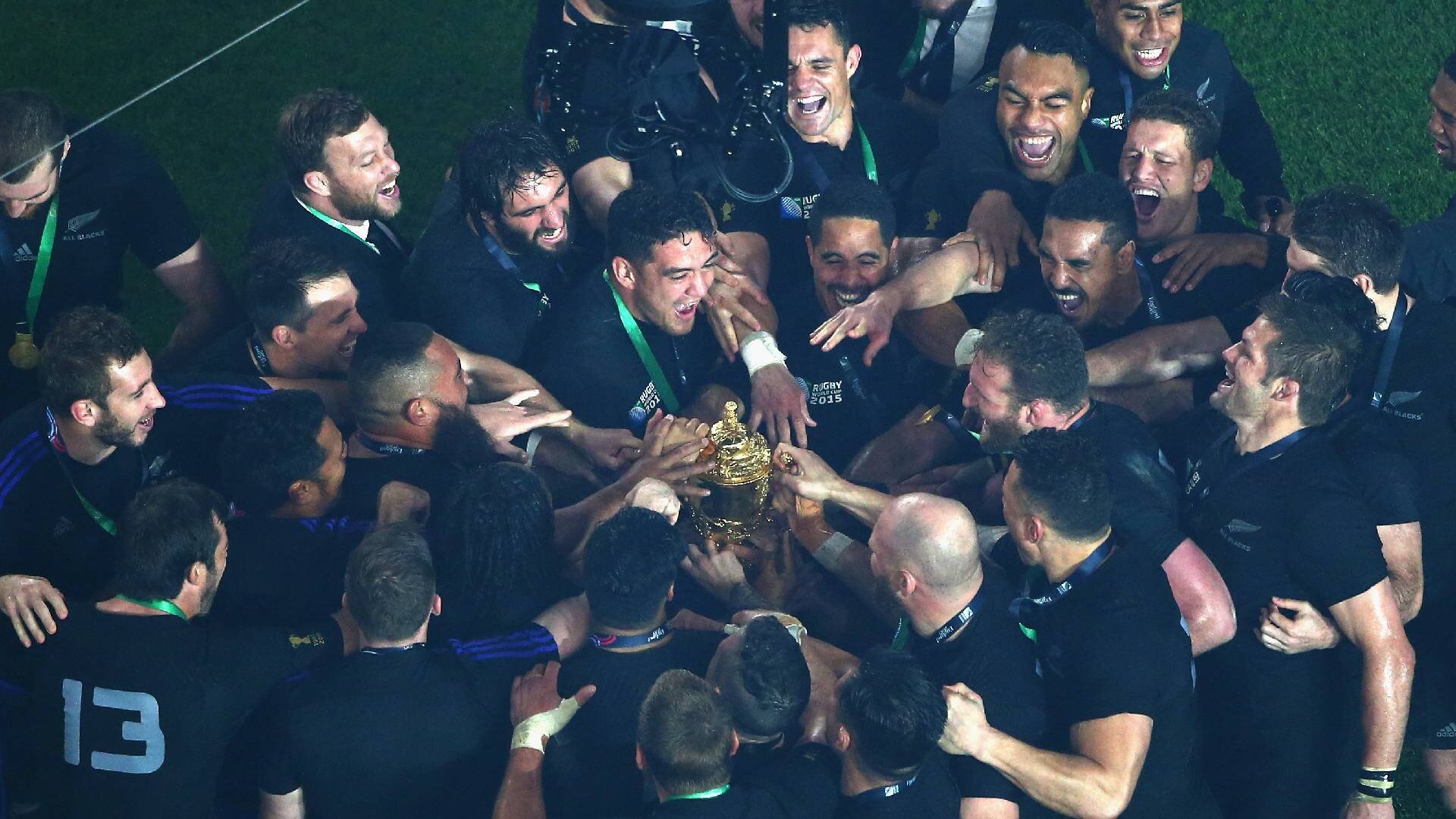Why the All Blacks were better equipped for the World Cup four years ago than they are now

The hype and anticipation that surrounds the announcement of a new All Blacks squad captures the attention of the nation, especially in a World Cup year like this one.
The inclusion of bolters that nobody would have seen making the national side at the beginning of the season are often as shocking and intriguing as the exclusions of previously established stars who have lost their place in the squad to these international rookies.
This passing of the baton between players, as it were, makes All Blacks squad announcements enticing viewing for fans up and down New Zealand, but for the players themselves, there would have been a very fine line between jubilation and disappointment when New Zealand Rugby chairman Brent Impey read the names of those selected on Tuesday evening.
The same can be said of Steve Hansen’s 41-man squad that he named ahead of the one-off Samoa test and Rugby Championship in the lead-up to the 2015 World Cup.
Plenty was made of the extended team, with the inclusion of five new caps – Codie Taylor, James Broadhurst, Lima Sopoaga, Nehe Milner-Skudder and Waisake Naholo – proving to be a significant talking point ahead of the global showpiece event.
As it turned out, three of those five newbies – Taylor, Milner-Skudder and Naholo – made the plane to England to help the All Blacks claim the Webb Ellis Cup for the second time running.
In doing so, they overtook incumbent stars such as Israel Dagg, Cory Jane and Charles Piutau in the national pecking order, and now the same sequence of events is happening to the likes of Milner-Skudder and Naholo through the emergence of youngsters Sevu Reece and Braydon Ennor in the outside backs.
Add to that the inclusions of fellow potential debutants Josh Ioane and Luke Jacobson, the re-calls of previously excluded All Blacks Brad Weber, Asafo Aumua and Atu Moli, and the omissions of various other individuals who many felt could and should have made the side, and there is plenty to discuss about this new All Blacks squad.
But, how does this squad compare to that 41-man pre-World Cup squad from four years ago that eventually went on to succeed in the United Kingdom later that year?
If this current squad are to make it a hat-trick of world titles, one would hope that Hansen’s team of 39 men would be on par, at least, with the mightily successful class of 2015.
So, how do the two enlarged squads stack up against one another?
Hookers
2015 squad: Keven Mealamu (123 tests), Dane Coles (27), Hika Elliot (3), Codie Taylor (0)
2019 squad: Dane Coles (60), Codie Taylor (41) Liam Coltman (4), Asafo Aumua (0)
In Keven Mealamu and Dane Coles, the 2015 All Blacks Rugby Championship squad possessed an outstanding one-two hooking combo that would go on to be a key element in that year’s World Cup tilt. Mealamu, regarded as one of New Zealand’s best ever hookers alongside Sean Fitzpatrick, had 123 test caps to his name at the time of being selected, making him the most experienced hooker in world rugby.
That proved to be invaluable from off the pine as a 28-year-old Coles, one year out from the peak of his career, devastated defences with his robust style of play. It seemed a perfect blend of form and experience that would be tricky to topple.
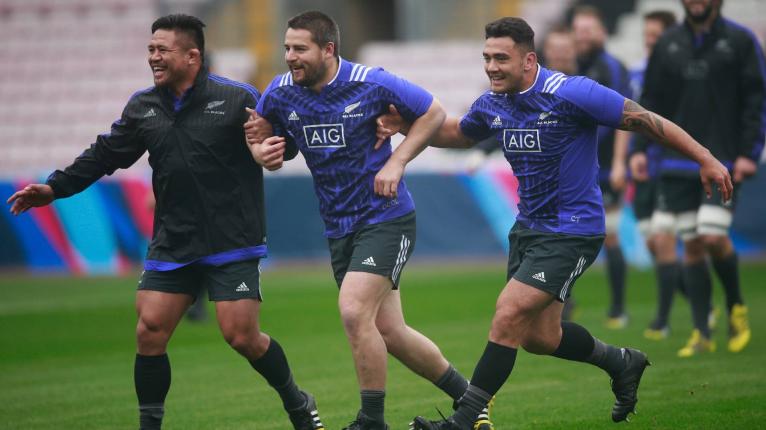
The emergence of the exciting Codie Taylor, who debuted with a try from off the bench against Argentina in the 2015 Championship opener, has eased the transition of hookers following the retirement of Mealamu, to the point where the injury-plagued Coles has quite the scrap on his hands to retain the No 2 jersey for this year’s World Cup.
In terms of back-ups, Liam Coltman appears to be a much more trustworthy option than Hika Elliot, who was loose in his sole appearance against Samoa in 2015. The highly-promising Asafo Aumua will probably have to bide his time if he wants to prove his worth as a long-term All Black prospect.
Overall, though, the Coles-Mealamu combination on its own is hard to beat, while the inclusion of a young Taylor makes the 2015 squad difficult to overlook.
Verdict: 2015 squad
Props
2015 squad: Tony Woodcock (110), Owen Franks (57), Ben Franks (31), Wyatt Crockett (27), Charlie Faumuina (20), Joe Moody (8)
2019 squad: Owen Franks (106), Joe Moody (37), Ofa Tu’ungafasi (26), Nepo Laulala (17), Karl Tu’inukuafe (13), Angus Ta’avao (3), Atu Moli (0)
Although he hasn’t been seen in action recently due to injury, Owen Franks continues to be as good as he ever has been, making him just as key of a member in this 2019 squad as he was in 2015.
On the loosehead side of the front row, the vast experience of Tony Woodcock makes it difficult for current incumbent Joe Moody to surpass him in value.
The next cabs off the rank in the 2019 squad – Nepo Laulala, Karl Tu’inukuafe and Ofa Tu’ungafasi – are similar to their 2015 counterparts – Wyatt Crockett, Charlie Faumuina and Ben Franks – in terms of experience and ability. Tu’inukuafe’s scrummaging and improved ability in the loose make him a crucial member of Hansen’s top tier match day squad, as is Laulala, who is equally as damaging at the set piece.
Tu’ungafasi can operate on either side of the scrum, a rare attribute, but he’s prone to conceding bone-headed penalties, while the power that was evident in Faumuina’s game is hard to go past.
Atu Moli has a big future in the black jersey, but this year probably isn’t the year we’ll see the best of his abilities. He’ll be the emergency call-up should injury strike at the World Cup, and the All Blacks selectors would hope that he brings a similar impact to that of Moody, who was superb when called upon in the knockout stages at the 2015 World Cup, should he be needed.
Verdict: 2015 squad
Locks
2015 squad: Sam Whitelock (62), Brodie Retallick (36), Luke Romano (17), Jeremy Thrush (11), James Broadhurst (0)
2019 squad: Sam Whitelock (108), Brodie Retallick (75), Patrick Tuipulotu (21), Jackson Hemopo (3)
The power duo of Brodie Retallick and Sam Whitelock continues to flourish at test level. They were sensational together in 2015, and with another four years of experience and a further 85 collective test caps between them, you can expect even better things over the coming months.
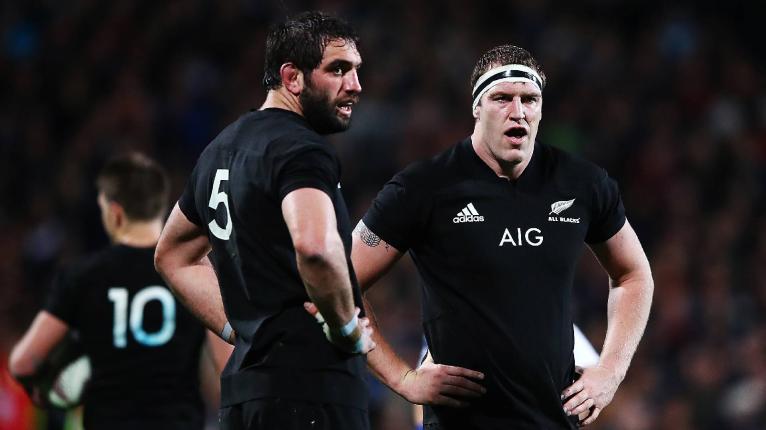
They also have a better support crew behind them this year as well. The injured Scott Barrett will provide world-class back-up when he returns at the end of the Rugby Championship, while the powerful Patrick Tuipulotu and the energetic Jackson Hemopo pack a much bigger punch as third, fourth and even fifth-string options than James Broadhurst, Luke Romano and Jeremy Thrush did four years ago. An easy win for the locks of 2019.
Verdict: 2019 squad
Loose Forwards
2015 squad: Richie McCaw (137), Kieran Read (72), Jerome Kaino (56), Liam Messam (40), Victor Vito (26), Sam Cane (22), Matt Todd (2)
2019 squad: Kieran Read (118), Sam Cane (60), Ardie Savea (35), Matt Todd (17), Vaea Fifita (9), Shannon Frizell (4), Dalton Papalii (2), Luke Jacobson (0)
What stands out from the above list of names is how few caps there are in the loose forwards compared to the 2015 cohort. At the beginning of the year, the starting trio of Jerome Kaino, Richie McCaw and Kieran Read boasted 258 test caps between them, and by the end of the season, they had all started in and won back-to-back World Cup titles.
Even their back-ups of Sam Cane, Liam Messam and Victor Vito had at least a few years’ worth of experience before heading to England, which paints a stark contrast to the eight-man group picked in 2019.
Only four players possess more than 10 caps, while Matt Todd, one of the more experienced members of the group, is by no means guaranteed a place in Japan. In terms of ability, this year’s starting core of Read, Cane and Ardie Savea, who is in putting in career-best performances at the moment, present a nice mix of form and experience, akin to that of the Coles-Mealamu partnership of 2015.
Back-ups Vaea Fifita, Shannon Frizell, Luke Jacobson and Dalton Papalii are all tantalising prospects, but their severe lack of test match experience compared to Messam and Vito are significant downfalls. Should Liam Squire return from his self-imposed exile, then the 2019 loose forwards would undeniably be strengthened, but as it stands, the class of 2015 remains superior.
Verdict: 2015 squad
Halfbacks
2015 squad: Aaron Smith (38), Tawera Kerr-Barlow (15), TJ Perenara (11)
2019 squad: Aaron Smith (82), TJ Perenara (55), Brad Weber (1)
Halfback is one of the few positional areas that is currently more experienced, and thus stronger, than in 2015.
Regardless of what anyone says, Aaron Smith is still the best halfback in not just New Zealand, but probably the whole world thanks to his exceptionally crisp and accurate passing. With 44 more tests to his name, and the rise of other halfbacks worldwide, such as Conor Murray and Faf de Klerk, expect Smith to step his game up another level this year.
Hansen couldn’t ask for a much better back-up than TJ Perenara, who has become an integral member of the match day squad over the past World Cup cycle. Although his passing isn’t in the same stratosphere as Smith’s, his running game and defensive qualities are immaculate.
The departure of Tawera Kerr-Barlow from Kiwi shores at the end of 2017 was a big blow for the All Blacks, and while Brad Weber, for all the electric ability he showed for the Chiefs this year, isn’t as proven as his former Super Rugby teammate, Hansen’s halfback stocks have certainly been bolstered thanks to the continual development of Smith and Perenara.
Verdict: 2019 squad
First-Fives
2015 squad: Dan Carter (102), Beauden Barrett (28), Colin Slade (17), Lima Sopoaga (0)
2019 squad: Beauden Barrett (73), Richie Mo’unga (9), Josh Ioane (0)
Having both Dan Carter and Beauden Barrett in the 2015 squad makes it pretty clear-cut as to which side had better stocks at first-five. What’s difficult to fathom is that Barrett was still only regarded as the third-best first-five in the country four years ago, with Aaron Cruden robbed of selection due to a season-ending knee injury, similar to that of Damian McKenzie this year.
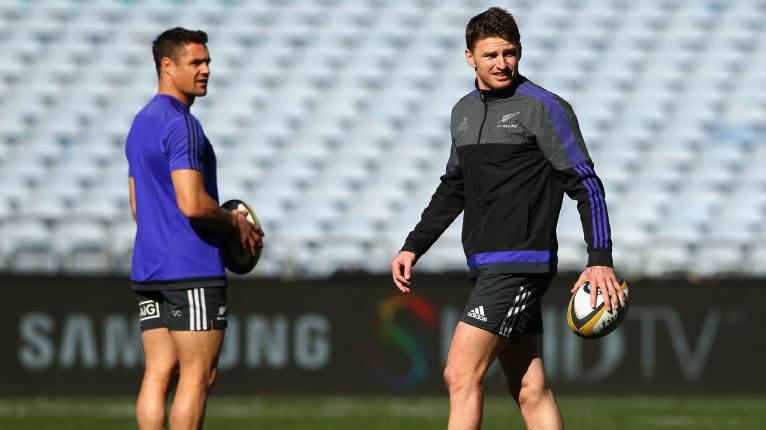
Nevertheless, with five World Rugby Player of the Year awards between Carter and Barrett, the class of 2015 was always in good hands at first-five. Colin Slade and Lima Sopoaga were trusty and skilled back-ups, and the same can be said of Josh Ioane and Richie Mo’unga, who some people would say is arguably pick of the lot, bar Carter.
However, despite the ever-growing quality of Barrett, any side that can boast the presence of Carter will be better for it, so it’s another victory for the 2015 squad.
Verdict: 2015 squad
Midfielders
2015 squad: Ma’a Nonu (94), Conrad Smith (85), Sonny Bill Williams (23), Ryan Crotty (13), Malakai Fekitoa (8)
2019 squad: Sonny Bill Williams (51), Anton Lienert-Brown (33), Ngani Laumape (10), Jack Goodhue (7)
Wholesale changes in the midfield sees only Sonny Bill Williams retained from the world champion 2015 squad. Ryan Crotty, who was the only name from 2015 not included in the World Cup campaign, would have been in the 2019 squad if it were not for injury. That doesn’t mask, however, the void left by veterans Ma’a Nonu and Conrad Smith, who together formed the greatest midfield partnership of all-time.

Hansen and his fellow selectors have tried various combinations to fill the gap left by the duo in the years since their retirement, and it shows in this year’s Rugby Championship, with Jack Goodhue and Ngani Laumape possessing just 17 test caps between them, while more than half of Anton Lienert-Brown’s appearances have been off the bench as a back-up option.
All three still bring plenty to the table, but finding a combination to suitably replace that of Nonu and Smith has been understandably difficult. That, combined with an injury-free Williams, who was in arguably career-best form, to help provide support from off the pine makes the 2015 contingent a standout.
Verdict: 2015 squad
Outside Backs
2015 squad: Cory Jane (48), Israel Dagg (46), Ben Smith (38), Julian Savea (33), Charles Piutau (14), Nehe Milner-Skudder (0), Waisake Naholo (0)
2019 squad: Ben Smith (76), Rieko Ioane (24), Jordie Barrett (9), George Bridge (1), Braydon Ennor (0), Sevu Reece (0)
2019 features an incredibly youthful sextet of outside backs, with the only player over the age of 24 being departing veteran Ben Smith. The fact that he’s the only remaining outside back from 2015 is a testament to the 33-year-old’s longevity and how highly he is regarded in the national set-up.
Everyone else is either 21 or 22-years-old, with George Bridge a couple years older at 24. Still, it’s an impressive list of players, with Rieko Ioane possibly the pick of the bunch as the world’s premier wing. Sevu Reece has the potential to take the world by storm in similar fashion to Nehe Milner-Skudder four years ago, while Jordie Barrett and Braydon Ennor bring versatility.
Without confirmation of who their best right wing is, though, it is hard to put them past the 2015 back three. The 2015 side’s starting back three consisted of Julian Savea, who was conditioned into barnstorming form once the World Cup rolled around, Milner-Skudder, who took everyone outside of New Zealand by surprise, and Smith, who was well on his way to establishing himself as a great of New Zealand rugby after captaining the Highlanders to their maiden Super Rugby title earlier that year.
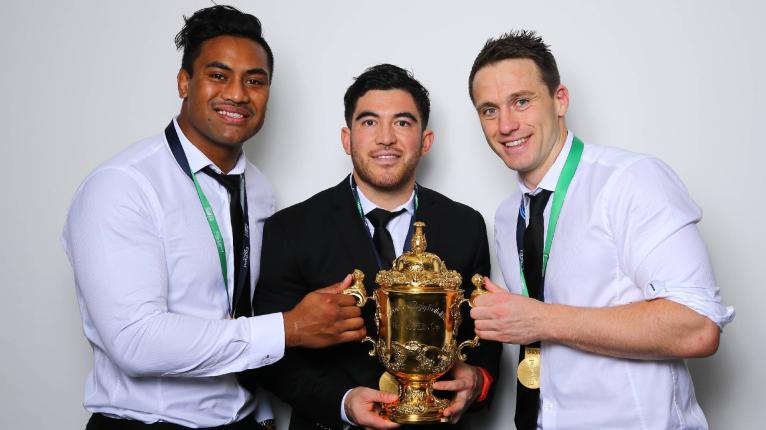
Waisake Naholo was another who was in irresistible form for the Highlanders, but both he and Charles Piutau weren’t granted many opportunities to prove their worth on the international stage that year. For all their achievements earlier in their careers, the presence of the ageing Israel Dagg and Cory Jane wasn’t of huge benefit to the 2015 team either.
Regardless, Savea, Milner-Skudder and Smith were sensational en route to the All Blacks’ World Cup success, and although Ioane, Smith and a yet-to-be-decided candidate could prove to be better than the 2015 outside backs, the group from four years ago takes this one out as well.
Verdict: 2015 squad
In other news:













































































